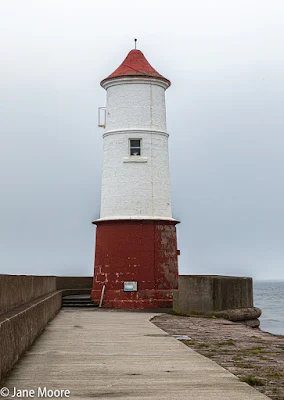Laurence Stephen Lowry RBA RA spent many a holiday at Berwick-upon-Tweed from the 1930"s and one can see examples of town and seascapes he painted. He was a fascinated by the sea and often painted many empty seascapes. His colour palette was black, white and blue grey that represented the colours of the north-east. It was a miserable day when we visited and it rained so hard we were soaked to the skin making our way back to the car.
Three distinctive bridges span the Tweed - the Union Bridge Horncliffe 1820 and the Royal Tweed Bridge - 1928 and Royal Border bridge 1850.
Spittal can be seen from the lighthouse peninsular (last image) and was a popular spa and bathing resort in the 18 century. It remains an area of natural beauty and wading birds seals and dolphins can be seen from this beach








No comments:
Post a Comment